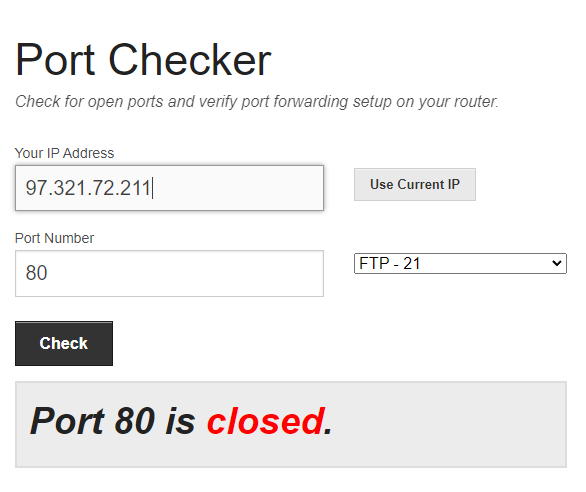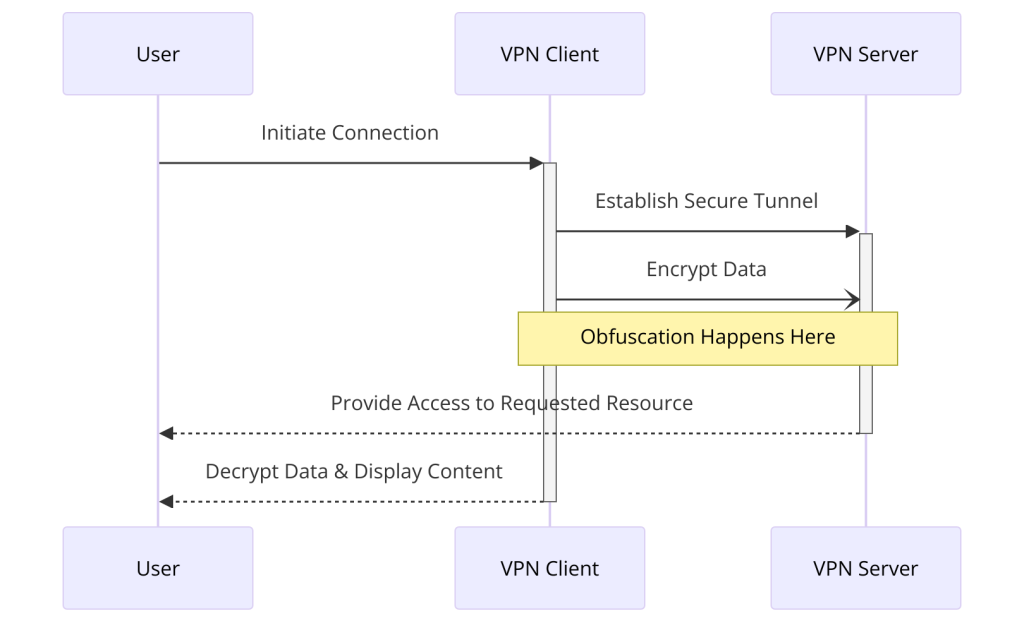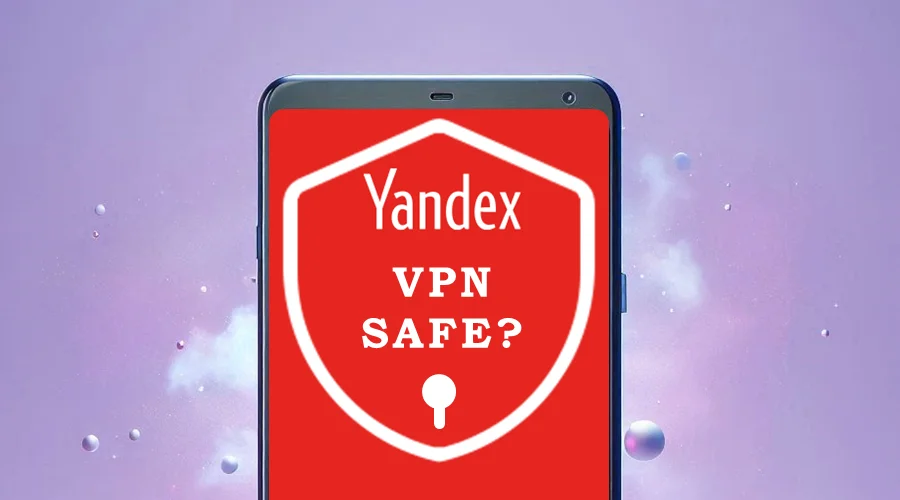How to Check if Your VPN Port is Blocked and How to Unblock it
8 min. read
Updated on
Read our disclosure page to find out how can you help VPNCentral sustain the editorial team Read more

Wondering why or if your VPN port is blocked?
Many users face the same issue, but the good news is, there’s a way to check and resolve it.
Understanding how to check if a VPN port is blocked is important for maintaining uninterrupted internet access and securing online activities.
Whether you’re working remotely, accessing restricted content, or simply safeguarding your privacy, you need to know how to bypass port blocking.
Let’s find out how you can identify and fix the problem.
How to check if a VPN port is blocked
Facing issues with your VPN could often be due to blocked ports. Luckily, there are several methods to check if a VPN port is blocked, ensuring you can troubleshoot effectively.
1. Using Online Port Checking Tools
Online port-checking tools offer an easy way to determine if your VPN ports are accessible. Simply enter the port number you wish to test on the website, and the tool will attempt to connect.
If it’s successful, your port is open, and if not, it might be blocked. This method is super easy and fast, allowing even those with minimal technical knowledge to check port status without hassle.

2. The Command Line Method
For users who prefer a more hands-on approach, the command line provides a precise method to check port availability.
Windows users can leverage Ncat, whereas Linux and macOS users might prefer Netcat or Ncat.
The command format generally follows the structure of entering the program name followed by the domain, server IP, or hostname, and finally the port number.
By executing these commands, you receive direct feedback on whether a connection through the specified port is possible. This offers a detailed insight into which ports are open and which ones are blocked.
3. Router Settings
Your router’s settings also serve as a crucial area to investigate for blocked VPN ports.
Accessing your router’s admin panel usually involves entering its IP address in a browser.
Once in, look for sections related to port forwarding, port filtering, or firewall settings.

These sections can reveal if your router has specific ports blocked, either for outbound or inbound traffic. Adjusting these settings may rectify connectivity issues, but be cautious not to expose your network to unnecessary risks. Always make sure you understand the implications of changes made within your router’s settings.
By using these tools, you’ll know if your VPN’s connectivity issues are related to port blockages.
How to Unblock VPN Ports
Let’s find out how to unblock these ports, so you can get more secure access.
1. Contact Your ISP
The easiest thing you can do is to reach out to your Internet Service Provider (ISP).
Sometimes, ISPs block certain ports to manage traffic and maintain security. When you explain your need for specific VPN ports, they might offer solutions or alternatives.
This is the first step in resolving port blocks, providing clarity and potentially simple fixes directly from the source.
2. Changing VPN Ports and Protocols
If ISP intervention doesn’t yield results, altering your VPN’s port and protocol settings comes next.
Many VPN services default to using the OpenVPN UDP protocol on port 1194, easily identified and blocked by firewalls.
Switching to OpenVPN TCP on port 443, which mirrors HTTPS web traffic, makes detection harder. If this is not enough, consider other protocols like L2TP/IPSec or Wireguard. These changes can significantly reduce the likelihood of your VPN traffic being blocked.
3. Use Port Forwarding
Port forwarding is another viable method for unblocking VPN ports, especially when the issue lies within your home network.
This technique involves configuring your router to direct requests from the internet to the specific port your VPN uses, effectively bypassing common blocks. While this requires a bit of technical know-how, it’s a robust solution for enhancing connectivity and overcoming restrictions imposed by default router settings.
Each of these methods offers a way of unblocking VPN ports. Let us know which one worked for you in the comments section below.
Advanced Techniques for Dealing with Blocked VPN Ports
If even after applying the fixes above, you’re still challenged with blocked VPN ports, more sophisticated methods can be a game changer. Below, I’ll share some advanced tactics that can help you bypass these roadblocks.
1. Stealth VPN
Stealth VPN technology (also known as obfuscation) is one of the most effective tools at your disposal for dealing with VPN blocks.
It works by disguising your VPN traffic as regular web traffic, making it harder for ISPs and government firewalls to detect and block it.
This technique employs methods such as obfuscation to scramble the data and hide the fact that it’s encrypted by a VPN protocol.

As a result, you can bypass deep packet inspections (DPI) that are used to spot and throttle VPN connections. Integrating stealth technology into your VPN usage allows you to access the internet freely and securely, even in highly restrictive environments.
2. Set Up a Dedicated IP
Another good method is obtaining a dedicated IP address from your VPN provider.
A dedicated IP is unique to you, meaning you’re less likely to share an IP with others who might misuse it, leading to blacklisting or blockages.
This setup greatly reduces the chances of having the ports you use blocked because the IP’s behavior is easier to predict and monitor from your end.
In addition, some services and websites require a consistent IP address for access. By setting up a dedicated IP, you can ensure more stable access to these resources without the hassle of recurrent verifications or blocks commonly associated with shared IPs.
How to Prevent Future VPN Port Blocks
Facing issues with VPN port blocking can disrupt your online experience. However, you can take steps to prevent these interruptions in the future.
Best Practices for Avoiding VPN Port Blocking
Maintaining smooth and secure VPN connectivity starts with adopting certain practices. Here are essential tips to help you prevent future VPN port blocks:
- Regularly update your VPN: Software updates often include enhancements that could help you circumvent new blocking techniques.
- Change ports and protocols: Since some ISPs might block common VPN ports, using less common ones can help you stay under the radar.
- Use stealth technologies: Stealth VPN technologies disguise your VPN traffic as regular traffic, making it harder for ISPs and governments to block it.
Choose the Right VPN Provider
Your choice of VPN provider plays a crucial role in preventing port blocks. Here’s what you should look for in a VPN service:
- Wide range of servers and ports: Providers with a vast selection of servers and ports offer more alternatives if some are blocked.
- Advanced obfuscation features: Opt for services that offer stealth technologies to hide your VPN traffic effectively.
- Strong encryption and security protocols: High-level security features protect your data while also making it harder for blocks to be implemented.
Choosing a VPN provider that aligns with these criteria ensures you have the tools needed to navigate around VPN port blocks, maintaining secure and uninterrupted internet access.
Final Words
Overcoming VPN port blocking doesn’t have to be a daunting task. Just checking your ports regularly, updating your VPN, and experimenting with different protocols can save you a lot of headaches down the line.
Naturally, when in doubt, don’t hesitate to reach out to your VPN provider.
Frequently Asked Questions
How do I test my VPN connection?
To test your VPN connection, first ensure your VPN is off and check your original IP address by visiting a “What is my IP address?” site. Then, activate your VPN and connect to a server. Finally, revisit the IP check website. If your IP has changed, your VPN is working.
Which ports to open for VPN?
The ports needed for a VPN connection vary by protocol. The usual VPN ports are 1194 for OpenVPN (UDP and TCP), 500 for IPsec/IKEv2, and 1723 for PPTP. You can customize these ports as needed.
How do you check if a port is being blocked?
To check for blocked ports, use the Command Prompt by typing netsh firewall show state and pressing Enter. This command displays all active and blocked ports in your firewall.
Can ISP block VPN?
Yes, ISPs can block VPN connections. Although it’s rare, ISPs may restrict access to VPNs to enforce their network restrictions or block specific VPN protocols, affecting your VPN’s functionality.
How do I enable VPN ports?
To enable VPN ports, activate port forwarding in your VPN application or through your VPN account dashboard. Specify the ports you want to open for the VPN and adjust the listening port in any applications using port forwarding to match the opened ports.









User forum
0 messages